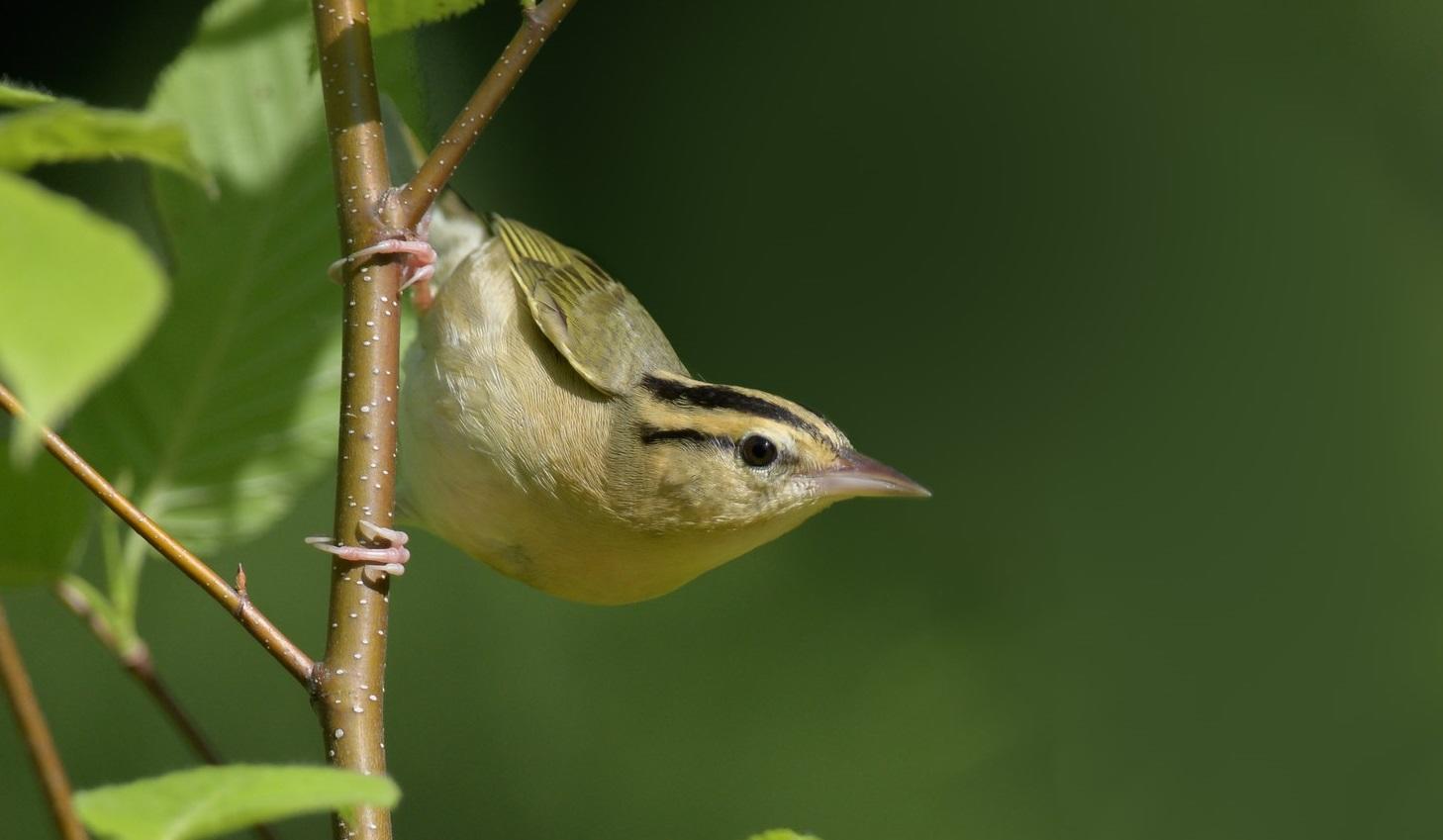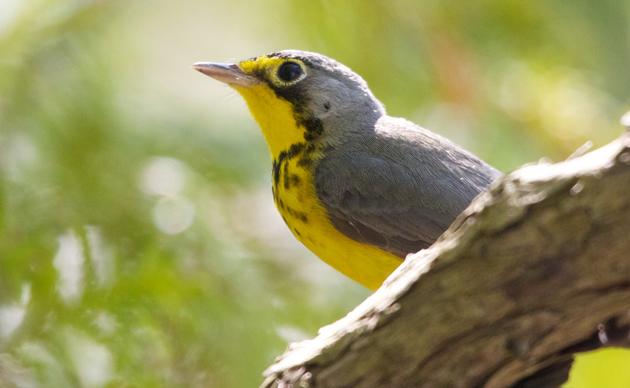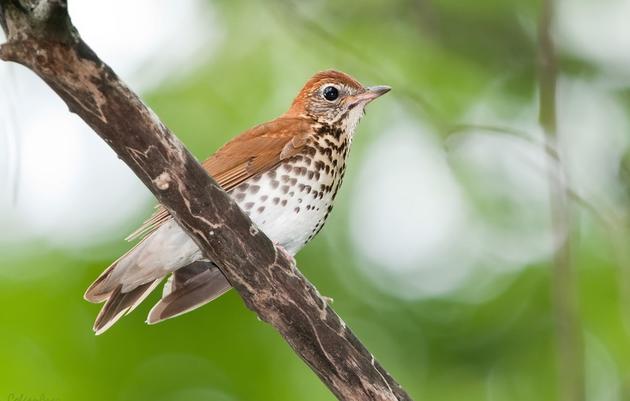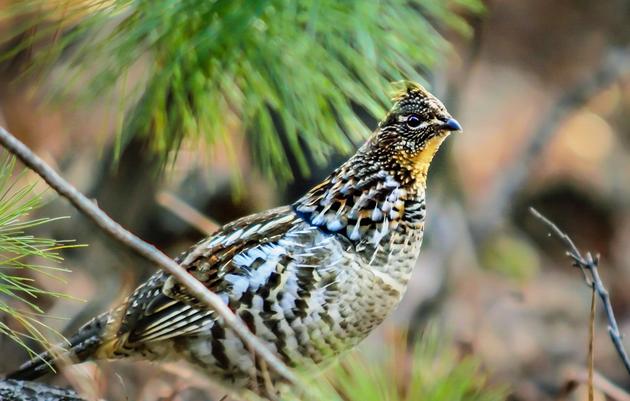The Basics: Forest Management for Birds

Access our full suite of free resources here.
Breeding birds need intact forested landscapes that include forests with multiple age classes, diverse species of native trees and other plant species, and complex structure, including, for example, well-developed understory and mid-story canopy layers, canopy gaps, snags, and downed woody material.
New York’s forests face significant challenges and stressors that degrade habitat for birds and other wildlife and impair forest health and resiliency, including fragmentation, invasive species, overabundant deer, lack of age class and other measures of diversity, and a changing climate.
Thankfully, forest landowners and managers can do something about most of these stressors.
Are you interested in managing your forest habitat and need guidance? Click here to fill out our Landowner Assistance Form so we can better connect you with helpful information. For forest owners actively managing your lands: Our forest program staff will follow-up with landowners that are located with Priority Forest Areas (see map here) in 2-3 weeks.
Background
Forest habitats support more bird species than other habitat types. Managing forests for birds is highly compatible with managing forests for other purposes, including financial reasons. A clearcut in the middle of a large, mature forest will create habitat for birds that require successional (i.e. young, regenerating) forest habitat as well as yield marketable wood. As a result, much research has evaluated how birds and other wildlife respond to forest management and numerous resources are available to help landowners manage forests in New York State.
Habitat Description
In addition to differences in tree species composition, forests also differ by successional stage depending on their past disturbance histories. Forests range from early-successional sapling stages to mature forests and everything in between. Different birds are associated with different successional stages and types of forest, although many will use a range of both for their habitat. For most birds, the dominant tree species are less important than the physical structure of the trees and they look more at characteristics such as the density of ground and shrub-layer vegetation and canopy closure. However, some birds do require a specific type of tree, a conifer, for example, to be present in order for a forest to be habitable. The management recommendations in this section apply largely to deciduous and mixed forests.
Threats
The most significant threats to New York forests are residential and commercial developments that lead to permanent conversions of forest to non-forest uses. Fires, floods, and ice storms might seem like they threaten forests, but these natural disturbances actually help maintain a matrix of successional stages across the landscape, providing habitat for the full diversity of bird species. Development not only destroys habitat, but it fragments the remaining habitat making it less suitable for birds.
Management Recommendations
-
Work with a professional forester with experience in forest habitat management.
There are many different ways to manage forests. If you are a landowner, the decision about your management objectives is up to you, but achieving the desired management objectives is best left to a professional. A professional forester will know which trees should be removed to leave behind the kind of forest you are seeking and can oversee the logging and sale of the wood. Contact your local Department of Environmental Conservation (DEC) Stewardship Forester, or take a look at the list of DEC Cooperating Foresters. -
Consider the surrounding landscape and how your property can provide quality habitat.
One of the first decisions the landowner will need to make is what successional stage should the management strive to achieve. Intensive management that removes a significant portion of the trees will set the forest back to earlier stages of succession and provide habitat for species that use successional forests. Intensive management opens the canopy, allowing more light to reach the forest floor, which prompts ground and shrub-layer vegetation growth. Less intensive or no management will leave a forest that supports birds that require more mature forests. Moderate intensity management through various types of partial harvests can allow some light to penetrate, but still retain a mostly or partially closed canopy. The decision about how intensively to manage a specific property should be made with the surrounding landscape in mind as much as the property to be managed. For example, if the landscape is predominantly mature forest, then creating some early-successional forest through logging will provide habitat for birds that might not be common in the area. In other situations where mature forests are lacking, simply doing nothing and allowing your forest to continue to mature might be the best management decision for birds. -
Large forest blocks provide better habitat than small forest fragments.
Small patches of forest surrounded by open fields or other non-forest land uses (i.e. fragmented forests) present big challenges for breeding forest birds. The edges that are created allow predators and nest parasites (Brown-headed Cowbirds, which lay their eggs in other birds' nests) easier access to nests, preventing many birds from successfully fledging young. Large, unfragmented forests help breeding birds avoid these challenges, resulting in more successful nesting. -
Overabundant deer can reduce habitat availability and quality.
In many areas of the state, deer are so abundant that they are having serious impacts on forest composition, biodiversity, and regeneration. In some cases, browsing deer can cause complete regeneration failure following a cut, with the result that a forest fails to grow back as the landowner desired. Forest managers must consider this carefully when planning harvests.Follow Best Management Practices to protect soil and water quality. -
NYS Forestry Best Management Practices (BMPs) for Water Quality are practices that help protect soil and water resources during the process of forest management.
Following BMPs does not constrain forest management options, but it allows landowners to pursue their preferred options while minimizing long-lasting site disturbance, erosion, and watershed impacts. BMPs guide such things as road building, stream crossings, and logging on slopes – all of which influence the impact of the operation on your property and your neighbors.
Related
WATCH: An Inside Look at Healthy Forests
On this webinar recording we take a close look at some of the threats our forests and forest birds face, and what we can do to help.
Top Invasive Species Resource Professionals Should Monitor for Forest Health
Help New York birds by creating healthier woodland habitat.
Kunjamuk Young Forest Demonstration Project
Audubon’s demo forest sites are living laboratories for people to visit, attend workshops, and learn about best practices to create healthy forest habitats.
How you can help, right now
Donate to Audubon
Help secure the future for birds at risk from climate change, habitat loss and other threats. Your support will power our science, education, advocacy and on-the-ground conservation efforts.







